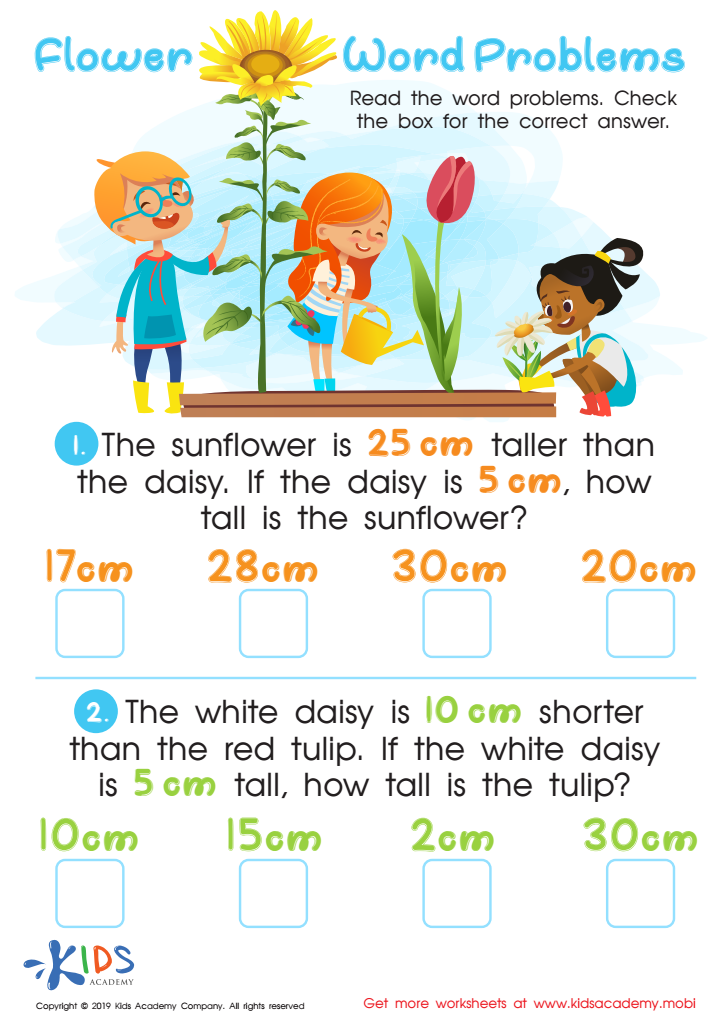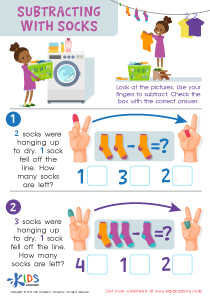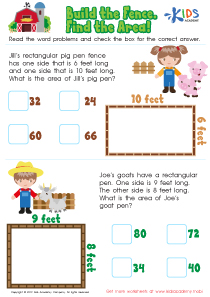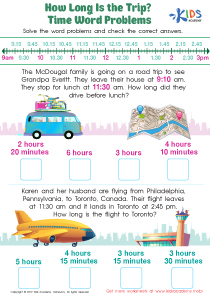Length and Mass Word Problems Worksheets for Ages 4-7
3 filtered results
-
From - To
Our Length and Mass Word Problems Worksheets for Ages 4-7 are designed to help young learners develop essential math skills through engaging and interactive exercises. These printable worksheets focus on real-world scenarios, encouraging kids to solve problems involving measurement concepts, like determining weights and lengths. Each activity aims to foster critical thinking, enhance comprehension, and build a solid foundation in math. Our comprehensive answer key provides clear solutions, making it easier for parents and teachers to guide students through the learning process. Ideal for classroom and home use, these worksheets make learning math fun and effective for early learners.


Length Word Problems Worksheet


Flower Word Problems Worksheet


Measuring the Length of Plants Worksheet
Parents and teachers should prioritize teaching length and mass word problems to children ages 4-7 because these concepts form fundamental building blocks for future mathematical understanding and critical thinking skills. At this developmental stage, young children are naturally curious about the world around them. Engaging them with concrete examples of length and mass using everyday objects helps them make sense of abstract mathematical ideas through real-world applications.
Early introduction to length and mass problems fosters essential skills such as comparison, measurement, and estimation, which are crucial for their cognitive development. For instance, when children determine whether one object is longer than another or compare the weights of different items, they are practicing observational and analytical skills. Additionally, these activities enhance fine motor skills and hand-eye coordination as children manipulate rulers, scales, and other measurement tools.
Moreover, solving word problems boosts language development by encouraging children to comprehend and express mathematical concepts verbally. This dual focus on literacy and numeracy strengthens overall academic readiness. Incorporating word problems into early education also instills a sense of confidence and perseverance in young learners as they discover that they can solve problems and draw conclusions based on evidence, laying a strong foundation for future learning in mathematics and beyond.
 Assign to My Students
Assign to My Students








